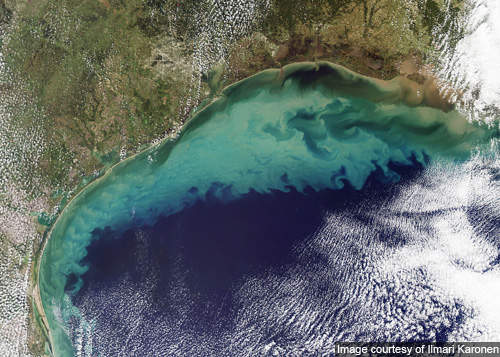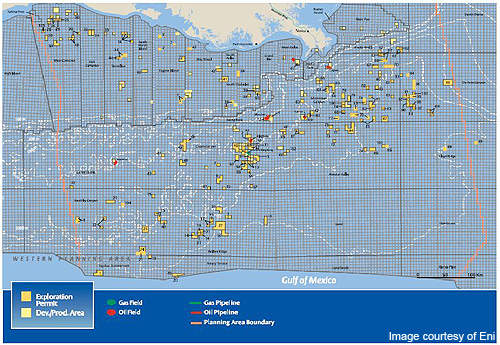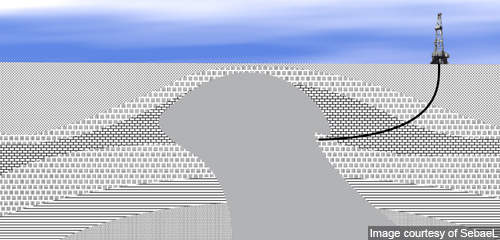The Appaloosa oilfield is located about 200km south-east of New Orleans in the Gulf of Mexico at a water depth of 2,500ft. It lies in blocks 459 and 460, and portions of blocks 503 and 504 of the Mississippi Canyon.
Eni is the operator and holds 100% interest in the field and has invested around $228m in its development. Eni operates about 333 blocks in the Gulf of Mexico.
The Appaloosa field pumped out first oil in June 2011. The oilfield is expected to make a significant addition to Eni’s operations in the Mississippi Canyon area.
The field is producing 7,000 barrels of oil equivalent per day (boepd), and has an estimated life of 15 years.
The production start-up at the field was expected in May 2010 with a peak rate of 7,500bpd, however, in June 2010, work was halted due to a six-month ban issued by the US Government following the oil spill caused by the explosion of BP’s Deepwater Horizon rig in the GoM in April 2010.
The US Government initially issued a 30-day ban that was later extended to six months as the oil spill needed to be contained. Several fields in the GoM were affected by the ban.
Appaloosa field development
Eni started drilling operations at the Appaloosa field in December 2005. The company drilled and tested five exploratory wells. Two more wells were drilled by the Transocean-owned Deepwater Millennium drillship in 2007 although no discovery was made from the wells.
In May 2008, Eni drilled the MC459 #1 well using the Transocean-owned GSF Celtic Sea semi-submersible rig, which encountered oil and gas in the field.
In December 2008 the development plan for the Appaloosa field, including the drilling of seven wells, was approved.
Eni leased the Transocean Amirante semi-submersible drilling rig in May 2009 for three years to drill a development well at the field.
Corral platform
The Appaloosa field produces with a tie-back to the Corral platform. The platform is a conventional jacket structure and was previously known as the Crystal platform. It lies in Mississippi Canyon block 365 at a depth of 620ft. The development wells at the Appaloosa field are connected to the Corral platform, which is also operated by Eni.
The platform was modified and expanded to increase its liquids production capacity to 12,000bpd. The modification allowed the platform handle the increased production from the Appaloosa field.
Eni’s Longhorn field is also tied back to the platform. It was modified by installing a production and compression unit with a processing capacity of 250mcfd of gas and 6,000bpd of oil for handling the output from Longhorn. The Appaloosa tie-back has made the Corral platform a major oil and gas processing hub in the GoM. It now has an aggregate processing capacity of 46,600boepd.
The platform is also expected to handle the output from Eni’s phase II development of the Longhorn field.
Appaloosa contracts
In November 2009, Eni awarded a contract for the subsea tie-back of the Appaloosa field’s wells to the Corral platform. Technip manufactured and installed a 32km production flowline and a riser that was welded at the company’s spoolbase in Alabama.
The company was responsible for the pre-commissioning and dewatering of the flowline. Technip also installed a free-issued umbilical and flying leads, as well as other subsea equipment.
Technip used its deepwater pipelay vessel Deep Blue to carry out the installation of the subsea equipment. The deepwater construction vessel Deep Pioneer was used to install the umbilicals. The company’s diving support vessel, Skandi Achiever, was used to carry out saturation diving work.





